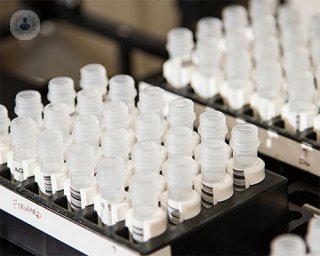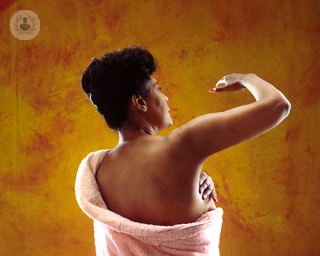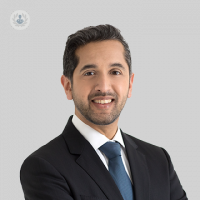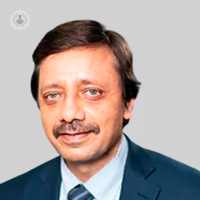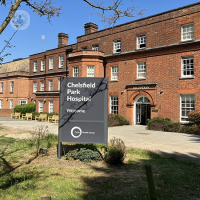Breast cancer surgery
Professor Andrew Baildam - Surgery
Created on: 08-08-2014
Updated on: 09-05-2023
Edited by: Sophie Kennedy
What is breast cancer surgery?
Breast cancer surgery is a key part of cancer treatment. This procedure can be done alone or in combination with other treatments to remove the cancer, the most common being chemotherapy, radiotherapy or hormonal therapy. In people with a high risk of breast cancer, surgery is the best option for reducing the risk of having breast cancer again in the future.
Depending on the type of breast cancer and the stage of the tumour, a patient might be offered one of the following to remove their cancer
- Mastectomy: The entire breast is surgically removed. This includes all breast tissue and in some cases, nearby tissue.
- Breast-conserving surgery (also referred to as a lumpectomy or partial mastectomy): The cancerous tissue is removed along with surrounding normal tissue, but remaining healthy tissue is not removed.
After a mastectomy, patients might wish to have breast reconstructive surgery.

Why is it done?
This surgery is performed on women with breast cancer as part of their treatment plan. The goal of breast cancer surgery is to remove all the cancer cells that may be in the breast. It is used to treat most breast cancers, and chosen based on the patient's risks:
High risk of breast cancer
Women with significant family history and/or a genetic mutation (such as the BRCA gene may be offered a mastectomy to prevent cancer.
Non-invasive cancer in the breast
If the diagnosis is ductal carcinoma in situ (a type of breast cancer that has not yet spread to the breast tissue), one option is the surgical removal of the tumour followed by radiation therapy. These patients may also resort to mastectomy.
Early breast cancer
Small breast cancers can be treated by removing the tumour through breast-conserving surgery or with a mastectomy (with or without reconstruction). Radiation and sometimes chemotherapy or hormone therapy might also be needed.
Larger breast cancer
Larger tumours can be treated with a mastectomy. However, pre-operative chemotherapy, hormonal, or targeted therapy is sometimes used to better remove the tumour.
Localised and advanced breast cancer
If there is a lot of cancerous tissue or the cancer has spread to lymph nodes, a patient is usually treated first with chemotherapy, hormonal or targeted therapy to reduce the cancer, therefore increasing the chance of successful surgery. A mastectomy may be performed, followed by radiation therapy.
Recurrent breast cancer
If a previous treatment didn’t work, such as breast-conserving surgery, a mastectomy might be tried to increase the likelihood.
What does it involve?
A patient’s breast cancer surgery will depend on their specific case i.e. the stage and size of their tumour. The procedure is generally as follows:
- The patient is anaesthetised.
- The surgeon makes an incision in the chest to remove the tumour and surrounding tissue. If a patient opts for breast-conserving surgery, the amount of tissue that is removed depends on the amount of cancerous tissue and its position in the breast. If a patient opts for a mastectomy, all breast tissue is removed.
- The specialist will evaluate the lymph nodes and remove nodes that the tumour can target (sentinel node). They will then be examined to study the possible presence of cancer in the nodes. If the cancer hasn’t reached the nodes, it’s not necessary to remove more tissue, but if there are traces of cancer, the specialist might need to surgically remove more nodes or recommend radiotherapy in the area after the surgery.
- The surgeon will close the incision with absorbable sutures
- The surgeon will reconstruct the breast if necessary. Sometimes, breast reconstruction can be performed during the same operation but other times, a second operation is needed.
How do you prepare for breast cancer surgery?
A consultation will be held between the patient and their surgeon before surgery. The objective is to help the patient understand their treatment options and what to expect from their treatment. It can be helpful to draw up a list with questions for the consultation. For example:
- Which surgeries are suitable and most recommended
- What the different techniques are for each type of surgery
- What part of the tissue must be removed
- How many operations will be necessary
- When the breast reconstruction can take place, if desired
- How the breast will look after treatment
During the consultation and overall preparation for the procedure, the specialist will take a complete medical history of the patient. Afterwards, tests will be performed such as blood tests, chest radiography and an electrocardiogram as well as a study of the breast to rule out any other conditions and to better understand the patient's breast structure.
Aftercare
After surgery, the patient will be transferred to a rehabilitation room where they will be monitored.
It’s normal to feel pain, numbness or a feeling of punctures in the armpit as the surgeon will have been working in that area. Patients are given instructions on how to care for the wound at home, as well as how to use drains and recognise signs of possible infection Patients are also given instructions on how to use a breast prosthesis, what bras to use and when to start wearing them.
In general, the specialist will give the patient proper instructions on how to resume daily chores and activities, on taking the appropriate medication, resuming a regular diet and adapting to the routine again.
Alternatives to breast cancer surgery
There are no alternatives to breast cancer surgery. Whether or not the patient should undergo it depends on many factors, as mentioned above, and the specialist will recommend one technique or another depending on the type of cancer the patient is suffering from, the stage of the cancer and the chance of success the surgery has.

